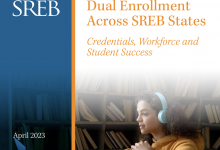Kansas’ Excel in CTE initiative was enacted by the state legislature in 2012 as HB155. The initiative was designed to help more learners enter high-wage, high-demand careers by providing funding for industry-recognized credentials and allowing secondary students to access Career Technical Education (CTE) dual enrollment opportunities. Since the program was launched in 2012, Kansas has seen dramatic increases in the number of high school students earning industry-recognized credentials and postsecondary CTE credit.
There are three notable components of the Excel in CTE initiative:
- CTE Incentive Program: Excel in CTE provides funding to compensate local education agencies for the cost of state-approved industry certification exams. Under the law, school districts are eligible to receive $500 (previously $1,000) for each student that either graduates with an approved credential or attains an approved credential within six months of graduation. These funds are to be used in part to pay for the certification exam.
- Credential Approval: Only those industry-recognized credentials that are approved by the state are eligible for the incentive award. Credentials are approved by the Kansas Department of Labor, which uses a rigorous set of criteria to identify a list of high-demand occupations and associated credentials. To make it onto the list, the occupation in question must have an industry credential, courses leading to the credential must be available to high school students, wages for the occupation must be at least 70 percent of the annual wage in the state, the occupation must require at least a high school diploma, and the occupation must be in-demand, as identified by the Department of Labor. Additionally, the legislation requires that the credential be associated with the program or course in which the student is enrolled.
- Concurrent Enrollment for Secondary Students: Another objective of Excel in CTE is to facilitate seamless transitions from secondary to postsecondary education via dual enrollment. The legislation directed the Kansas Board of Regents (KBOR) to work with high schools, community colleges, technical colleges and the state institute of technology to develop a statewide articulation agreement to allow high school students to earn postsecondary credits in a CTE program of study. The bill also waives tuition requirements for secondary students enrolled in Kansas community colleges, allowing them to access postsecondary coursework free of tuition.
The Kansas state legislature also provided $50,000 to develop a communications campaign to raise awareness and increase participation in Excel in CTE. The KBOR developed a variety of brochures, posters and promotional videos, which are available to access and use on its website.
Policy in Action
Participation in dual enrollment has nearly tripled since Excel in CTE began. In the 2017-18 school year alone, 11,690 students participated, earning a total of 92,082 college credit hours and 1,420 credentials.
The Brookings Institution recognized Excel in CTE as a “Top Ten Innovation to Watch” in 2013, citing a 36 percent increase in the number of high school students enrolled in college CTE courses. Recognizing this demand, the state increased funding for the free tuition program in 2014 to enable more eligible students to earn postsecondary CTE credits. Since then, funding for dual credit has been reduced slightly. And, despite widespread interest and record credential attainment, funding for the credential incentive has decreased from a high of $1.5 million in 2013-14 to $50,000 in 2015-16.
Related Links
- Full Bill Text: HB155 (2012)
- Handout: Excel in CTE Initiative (2017)
- Techniques Magazine: Free CTE College Tuition and Certification Funding: KS SB155 at Work (2013)
- Kansas Board of Regents Website: Excel in CTE
- Qualifying Credential Incentive List (2019-2020)
- Determination Process for SB 155 Credential Incentive List for High Demand Occupations
- Kansas Board of Regents Promotional Website for CTE






